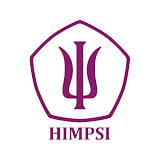LEVEL OF ALEXITHYMIA AS A MEDIATOR OF EMPATHY AND COMMUNICATION SATISFACTION
Abstract
The Digital Generation is considered a generation that lacks empathy. Based on the research results, this generation tends to think for themselves. One that makes a person have low empathy is alexithymia, which is a person's lack of ability to identify and describe and identify emotions within themselves. The lack of emotion and the absence of emotion makes satisfaction in communication also low. This study aims to see the level of alexithymia and empathy on communication satisfaction and relationship satisfaction. The research method used is descriptive quantitative. There were 102 research participants using random sampling technique. Data collection used the Alexithymia Scale (α=840) Empathy Scale (α=675) and Communication Satisfaction Scale (α=819). Test results using Path Analysis show that Alexithymia mediates the relationship between empathy and communication satisfaction with a contribution of 83%. It can be concluded that individuals who have high levels of alexithymia have high empathy and communication satisfaction.
Keywords
Full Text:
PDFReferences
Aaron, R. V., Snodgress, M. A., Blain, S. D., & Park, S. (2018). Affect labeling and other aspects of emotional experiences in relation to alexithymia following standardized emotion inductions. Psychiatry Research, 262, 115–123. https://doi.org/10.1016/j.psychres.2018.02.014
Adiningtyas, N., & Astuti, S. W. (2022). Level Alexithymia Sebagai Mediator Motif Komunikasi dan Kepuasan Komunikasi. 11, 190–201.
Astuti, S. W., Bajari, A., Rachmiatie, A., & Venus, A. (2020). Correlation between Interpersonal Communication Motive and Interpersonal Communication Gratification with Psychological Well Being of Media Digital user in Indonesian Millennial Generation. 1–7. https://doi.org/10.4108/eai.26-11-2019.2295165
Astuti, S. W., Bajari, A., Rachmiatie, A., & Venus, A. (2021). Love Is One of the Reasons Students Communicate: Study About Motive Communication and Relational Satisfaction Students. Psychology and Education Journal, 58(2), 4655–4667. https://doi.org/10.17762/pae.v58i2.2853
Beatty, M. J., & Dobos, J. A. (1992). Adult Sons’ Satisfaction with Their Relationships with Fathers and Person-Group (Father) Communication Apprehension. Communication Quarterly, 40(2), 162–176. https://doi.org/10.1080/01463379209369831
Berryman, C., Ferguson, C. J., & Negy, C. (2018). Social Media Use and Mental Health among Young Adults. Psychiatric Quarterly, 89(2), 307–314. https://doi.org/10.1007/s11126-017-9535-6
Di Lorenzo, R., Venturelli, G., Spiga, G., & Ferri, P. (2019). Emotional intelligence, empathy and alexithymia: A cross-sectional survey on emotional competence in a group of nursing students. Acta Biomedica, 90(February), 32–43. https://doi.org/10.23750/abm.v90i4-S.8273
Faradina Muhardi, N. B. (2019). Hubungan Antara Level Alexithymia dengan Keterampilan Interpersonal pada Remaja (Suatu Penelitian pada Siswa di SMAN 1 Peukan Bada Aceh Besar). JIMBK: Jurnal Ilmiah Mahasiswa Bimbingan Dan Konseling, 4(4).
González-Arias, M., Martínez-Molina, A., Galdames, S., & Urzúa, A. (2018). Psychometric properties of the 20-Item Toronto Alexithymia Scale in the chilean population. Frontiers in Psychology, 9(JUN), 1–7. https://doi.org/10.3389/fpsyg.2018.00963
Hecth, M. L., & Marston, P. J. (1987). Communication satisfaction and the temporal development of conversations. Communication Research Reports, 4((2)), 60-65.
Heeman, V. C. (2008). Interpersonal communication motives satisfaction, and psychological well-being in father-young adult daughter relationships. M.A., Kent State University-Ohio.
Lestari, Y. M., Dewi, S. Y., & Chairani, A. (2020). Hubungan alexithymia dengan kecanduan media sosial pada remaja di jakarta selatan. Scripta Score Scientific Medical Journal, 1(2), 1–9.
Luminet, O., Nielson, K. A., & Ridout, N. (2021). Having no words for feelings: alexithymia as a fundamental personality dimension at the interface of cognition and emotion. Cognition and Emotion, 35(3), 435–448. https://doi.org/10.1080/02699931.2021.1916442
Martin Swanbrow Becker. (2019). First Generation College Students’ Perceptions of an Academic Retention Program. Journal of the Scholarship of Teaching and Learning, 19(5), 61–76.
Nancy Eisenberg, Natalie D. Eggum, and L. D. G. (2010). Empathy-related Responding: Associations with Prosocial Behavior, Aggression, and Intergroup Relations. Soc Issues Policy Rev., 4(1), 143–180.
Oriel FeldmanHall*, T. D. and D. M. (2012). Alexithymia decreases altruism in real social decisions. Cortex, 1–6.
Sahin, C. (2017). The predictive level of social media addiction for life satisfaction: A study on university students. Turkish Online Journal of Educational Technology, 2017(December Special Issue INTE), 515–520.
Scimeca, G., Bruno, A., Cava, L., Pandolfo, G., Muscatello, M. R. A., & Zoccali, R. (2014). The relationship between alexithymia, anxiety, depression, and internet addiction severity in a sample of Italian high school students. Scientific World Journal, 2014. https://doi.org/10.1155/2014/504376
Spreng, R. N., McKinnon, M. C., Mar, R. A., & Levine, B. (. (2009). “The Toronto Empathy Questionnaire.” Journal of Personality Assessment, 91(1), 62–71.
Sri Mulyani, S. M. N. (2020). Hubungan Antara Kecenderungan Alexithymia dengan Hubungan Dekat pada Dewasa Awal. Jurnal Communicate, 6(1), 7–12.
Twenge, J. M. (2017). iGen: Why today’s super-connected kids are growing up less rebellious, more tolerant, less happy--and completely unprepared for adulthood--and what that means for the rest of us. (Simon and Schuster. (ed.)).
DOI: http://dx.doi.org/10.22441/biopsikososial.v8i2.24115
Refbacks
- There are currently no refbacks.
Copyright (c) 2024 Biopsikososial: Jurnal Ilmiah Psikologi Fakultas Psikologi Universitas Mercubuana Jakarta
JBUMBand its articles is licensed under a Creative Commons Attribution-ShareAlike 4.0 International License.
Tim Editorial Office
JBUMB
Fakultas Psikologi, Universitas Mercu Buana
Jalan Meruya Selatan No. 1, Kembangan, Jakarta Barat, 11650, Indonesia
Phone: +6281318855243
Email: [email protected]
Website: https://publikasi.mercubuana.ac.id/index.php/biopsikososial/index

















